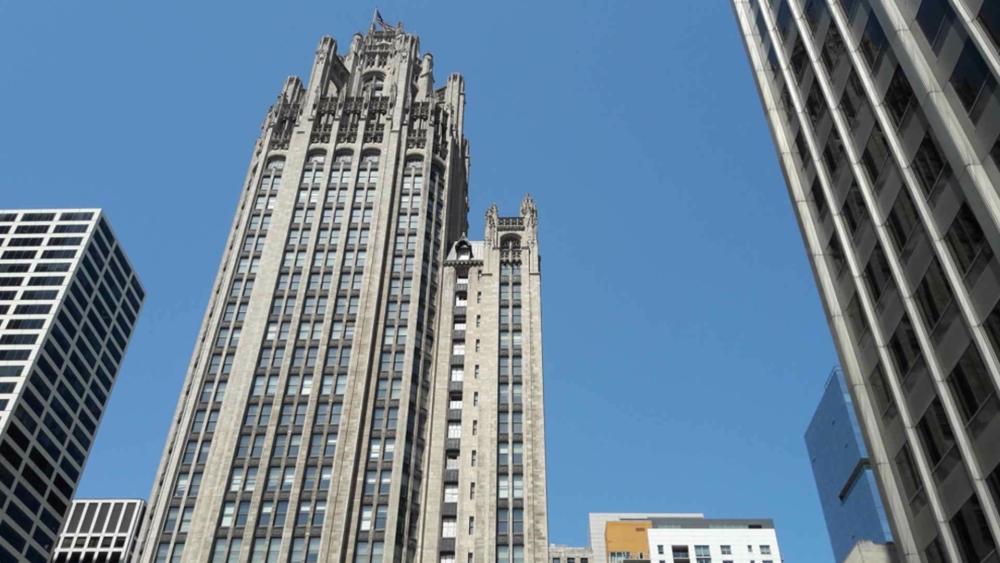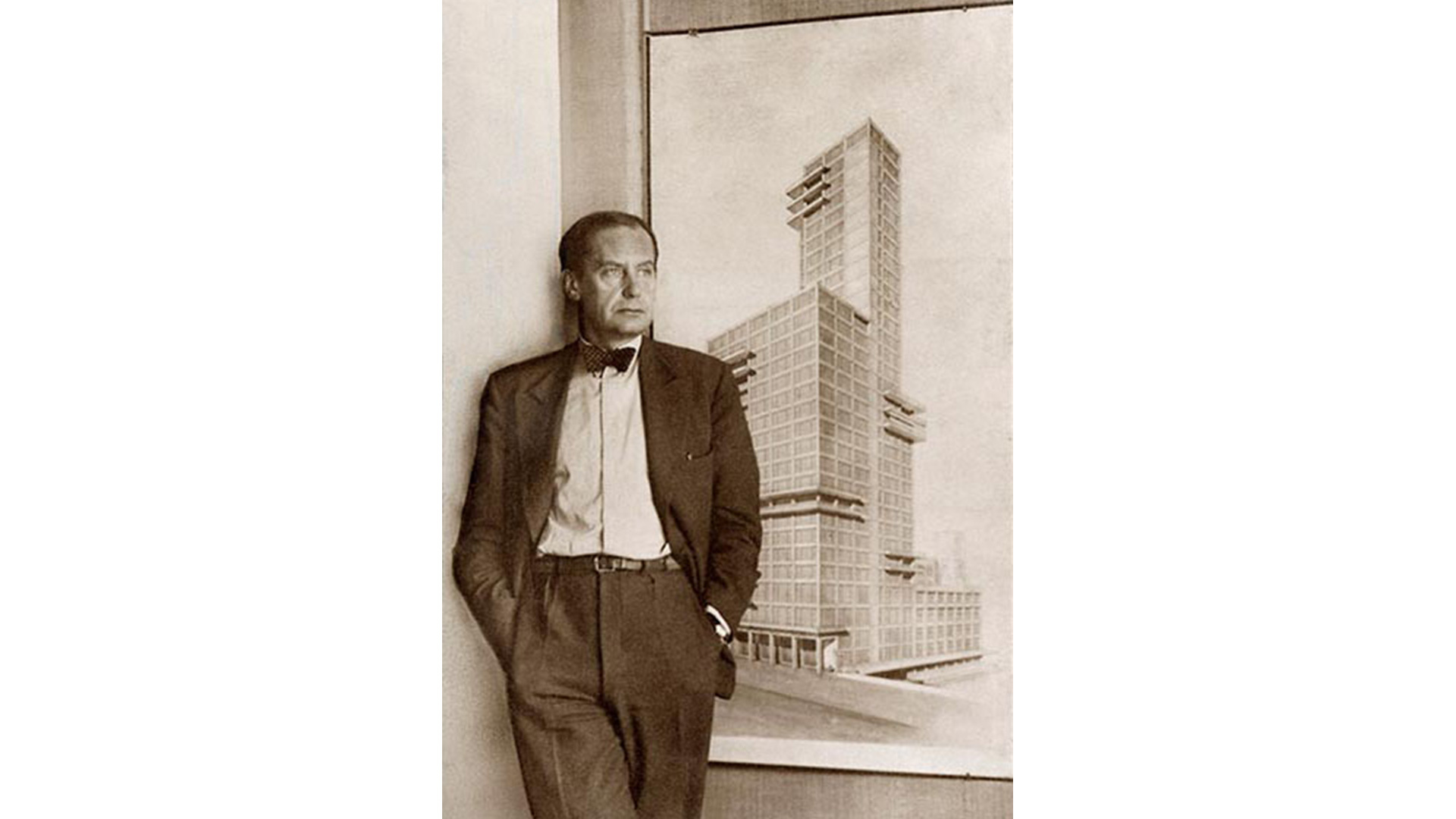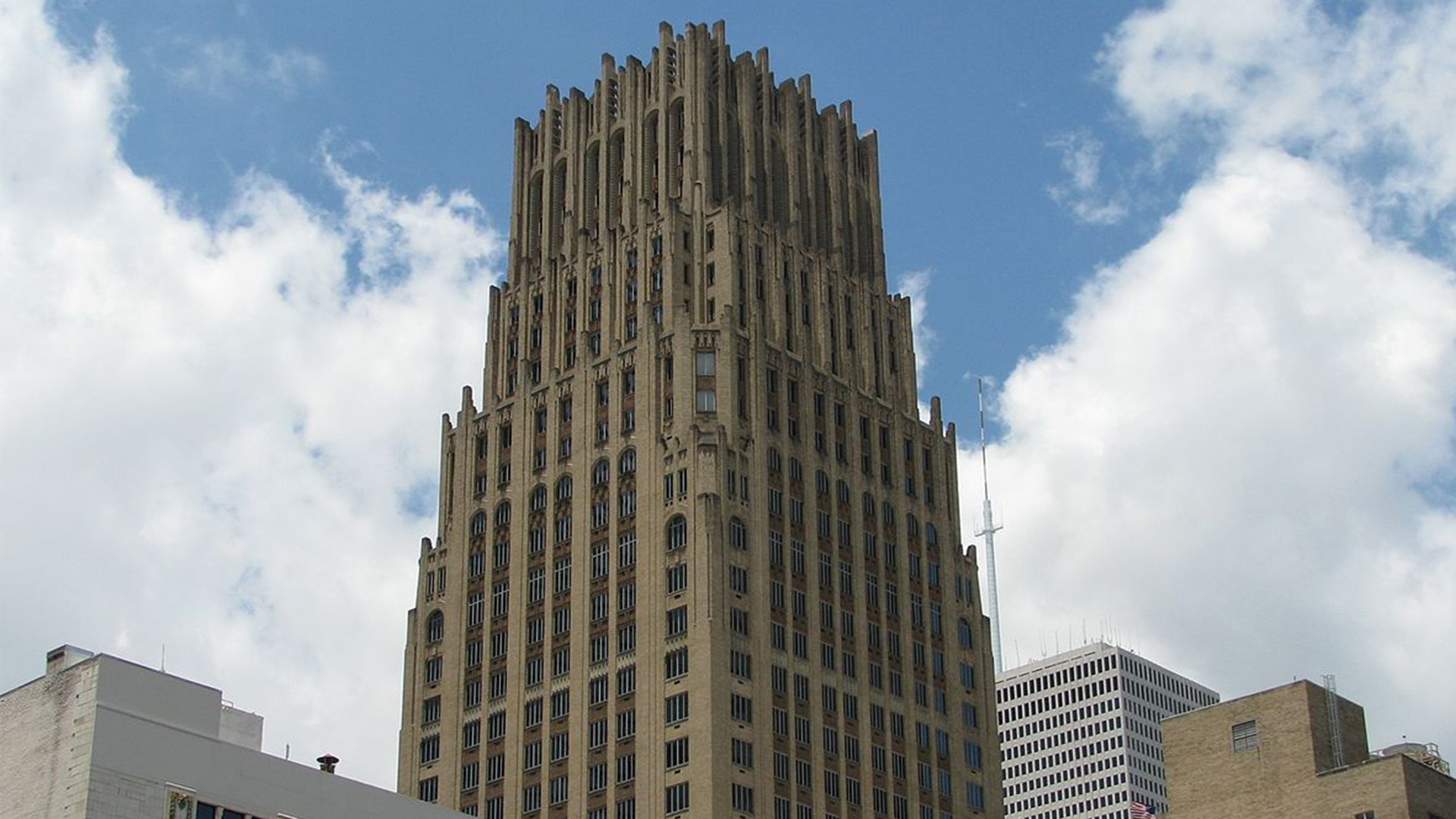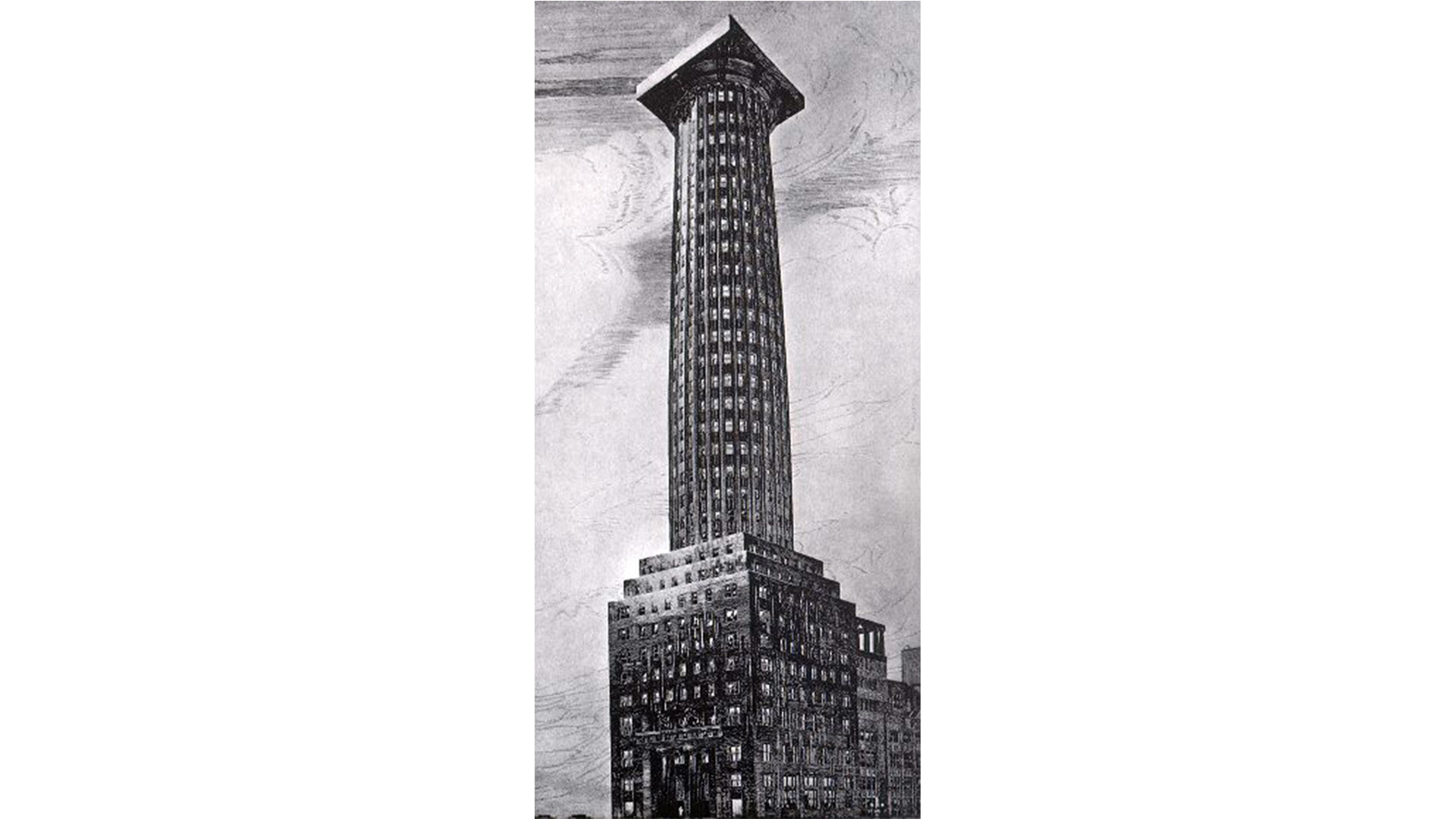
"Evolved from Dying Ideas." What the 1922 Chicago Tribune Tower Competition Might Tell Us About Amazon HQ2
Pictured above: Chicago Tribune Tower
Ninety six years have passed since Colonel Robert R. McCormick, the powerful Chicago political leader and publisher of the Chicago Tribune, announced his intention to create “the most beautiful and distinctive office building in the world” in an effort to give his growing media company a global profile. Over 260 entries from around the world were submitted including one late entry.
The winner, designed by Raymond Hood and John Mead Howells, was a soaring Gothic design. It stands proudly on the site. Though criticized by Louis Sullivan as “evolved from dying ideas,” it is elegant, and a cautious choice for winner of the “best in the world.”
 Walter Gropius with his entry
Walter Gropius with his entry
But much, much more interesting were the runners up. Saarinen’s (late) entry, finishing in second place, was clearly sleeker and more modern than the others. It subsequently became the prime influence on a number of North American skyscrapers including Houston’s beautiful Gulf Oil Building. Walter Gropius’s glass building anticipated new technologies, new paradigms, and new ways for tall buildings to relate to their natural context - the sky. Adolf Loos’s entry showed the power of historical reference as commentary rather than as copy, it was an over scaled historical gesture, an insider’s joke (newspaper column). It foreshadowed an entire architectural movement, Post Modernism, in the late 20th Century. Most notable among them was Phillip Johnson’s Chippendale top for the AT&T headquarters (as featured on the cover of TIME Magazine).
 Houston's Gulf Oil Building, modeled after Saarinen's second place entry
Houston's Gulf Oil Building, modeled after Saarinen's second place entry
The best designs that weren’t selected for the Tribune Tower eclipsed the winner in long term influence. Will this be the case with Amazon’s highly public search for its HQ2 site? HQ2 is the biggest, most prominent prize ever in our country’s intramural “capture the company” competition. Some prominent, well-organized city, town, or metropolitan area will win the prize and we will all want to know what their secret was.
 Aldof Loo's Entry
Aldof Loo's Entry
But what about the runners up? What about their exciting new models for partnership, their crazy ideas? What about the small communities where there are the risk takers and big goal setters, playing in the majors? All of these competitors have looked hard at how they would stack up, they have assessed their weak areas. Town and cities have given serious thought to new strategies from mobility to literacy to human rights to address long time weaknesses. Their leadership has found power in newly forged alliances. They’ve come to an awareness of the larger region, and have opened to real “give and take” with stakeholders.
The spinoff from Amazon’s HQ2 competition will inevitably dictate the new players on the scene, all the creative strategies, and all the newly formed networks of cooperation and support. Don’t look to see where Amazon HQ2 goes. Look to see who Arlington, Texas attracts using a similar package. Look to see which companies find Raleigh, Boston, or Tampa Bay to have exciting “who knew” hidden advantages. Look to see how differently deals are structured in Austin and Pittsburgh and Toronto to accomplish the same program.
Amazon has issued a challenge, and 238 communities have responded with their very best. Let’s see what they come up with!